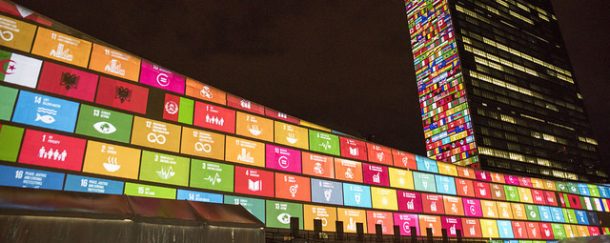SDG ←→ LCA
October 30, 2017 by Bo Weidema
Since the UN Sustainable Development Goals (SDG) were published 2 years ago, much has been said on the difficulty in implementing them into business practice. Part of the difficulty comes from the wordings, which often appear better suited for governmental use than specifically for use in a business context. But the main difficulty comes from the sheer number of goals (17) and accompanying targets (169) and indicators (so far 230). While this should provide something for everyone, it also implies an obvious risk of cherry-picking and sub-optimised decision-making. These problems have been pointed out very eloquently by other bloggers, e.g. Nienke Palstra & Ruth Fuller from Bond.
The Business and Sustainable Development Commission have done a great job in pointing out the positive market opportunities that the SDGs open up for first-movers, and the UN Global Compact and the Global Reporting Initiative (GRI) have teamed up in an action platform to provide best practices for corporate reporting on the SDGs, with a first analysis report published last month and a “Practical Guide for Defining Priorities and Reporting” announced for January 2018.
So what can we add from an LCA perspective that has not already been said and is not already being done? Well, what is missing in the approaches mentioned above, and which LCA has always been focused on providing, is an overall framework can avoid shifting of responsibilities and avoid sub-optimised decision-making.
Therefore, we now launch the SDG club, a new crowd-funded project to place each of the indicators for 169 targets of the 17 SDGs into a comprehensive, quantified and operational impact pathway framework, linking forward to sustainable wellbeing (utility) as a comprehensive summary (endpoint) indicator for all social, ecosystem and economic impacts. At the same time, we will link each of the indicators for 169 targets back to company specific activities and product life cycles, using a global multi-regional input-output database with environmental and socio-economic extensions. Due to the use of a single endpoint, this framework will allow to differentiate major from minor impact pathways, to quantify trade-offs and synergies, and to compare business decisions, performance and improvement options, also across industry sectors. With this project, we wish to provide an actionable and rational method for businesses and governments to integrate the SDGs into decision making and monitoring.
This new project builds on and extends the impact assessment method developed by 2.-0 LCA consultants for social footprinting, which has been successfully tested for feasibility in global supply chain contexts. For example, a recent whitepaper from Nestlé appraised our method with these words:
“The great benefit of the Social Footprint method lies in the use of widely available background information from databases to assess social impacts top-down. As opposed to many other approaches, this means that some initial data is available for practically any specific case study, drastically reducing the overall cost”
We invite everyone to join the SDG club and thereby contribute to streamline and coordinate action and increase efficiency in implementing the 2030 Agenda.

Photo credits: UN Photo/Cia Pak, 22 September 2015, United Nations, New York, Photo # 643590, licence creative commons 2.0.
See also a previous blogpost on sustainability indicators.